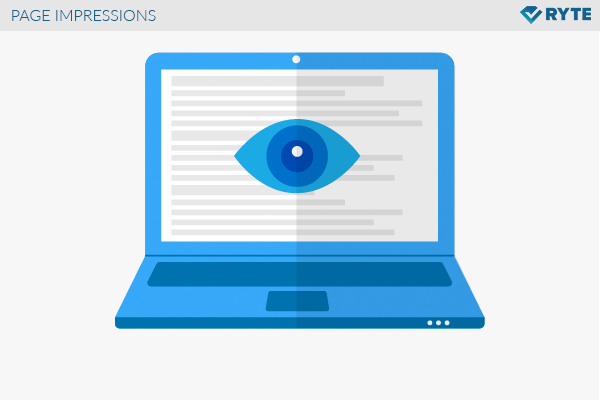Page Impressions
Page Impressions (also: impressions or page views, abbreviated as PI) is a term used in web analytics. It refers to the display or page view of an entire HTML document in a browser. Therefore PIs are also frequently called contacts. If page impressions are registered, it is generally not assigned to a specific user. A user can view multiple pages and create multiple page impressions.
Since it is not possible to make a clear statement about specific user behavior with the help of page impressions, (as it constitutes a quantitative analysis), metrics such as unique visits or visitors are preferred as the basis for traffic analyses for quality web analytics. Page impressions do play a role, especially in terms of pricing of display ads in the form of the CPM.
Background
When a browser requests a web site, it loads the corresponding HTML document from the server. At that moment, the visit is registered as a page impression in the log file of the server. Page impressions can also be generated by automatic site visits. Thus, both crawlers as well as human users produce impressions and an exact differentiation can only take place through the analysis of visitor sources or hostnames.
Importance in advertising
Page impressions play a large role in media planning and advertising in online marketing. A payment model of cost per mille (abbreviation: CPM) (or cost per thousand, mille is Latin for “thousand”) is taken as the basis for billing. The buyer of the traffic pays a certain amount per thousand advertisement impressions, or simply per thousand impressions.
It is also simply called “ad impressions.” However, since it can be assumed that users will also see the ad display when loading a complete site (in other words, a page impression), the terms “page impression” and “ad impression” could be used interchangeably. However, of course, you can have multiple ad impressions per page impression due to the technical possibilities.
When booking banner ads, the marketer can choose the quality and the type of ad networks, but the CPM unit remains more of a quantitative criterion in order to obtain coverage. To specifically target conversions with the ad, page impressions should not be the focus of attention, but targeting or more specifically, retargeting. Alternatively, display campaigns are therefore often focused on a CPA (cost per acquisition) basis or based on performance.
Impressions with Google AdWords
If you decide on display ads with Google AdWords or Bing Ads, they also pay based on the CPM model, i.e. pay per number of page impressions. For the ordinary ad placement on click basis, page impressions plays only an indirect role, namely in the calculation of the CTR (click-through rate). In this case, the ratio of the number of superimposed text ads to the actual clicks is counted. The same applies for PLAs (Product Listing Ads). If the respective ad is displayed 100 times for a particular keyword next to the SERP and only clicked once, the CTR is 1%.
Page impressions and SEO
For SEO purposes, page impressions may give an indication of whether a website is ever viewed at all. Combined with bounce rate and the length of stay on the site, you can get an impression of how attractive the web content is for users. A prerequisite for a meaningful analysis is that bots and other automated views must be excluded from the analysis.
If the number of page impressions increases unnaturally, one can suspect automatic accesses that can then be addressed with appropriate measures, such as their exclusion via robots.txt.

